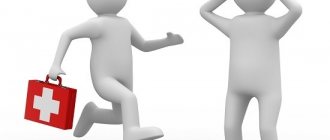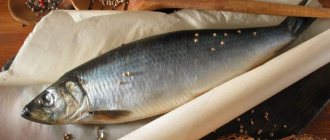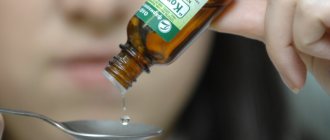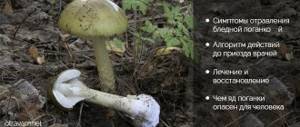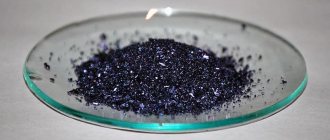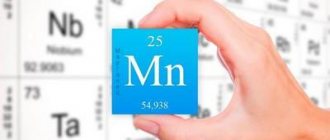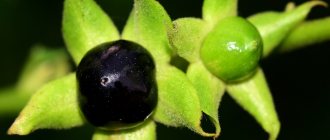Atropine is a substance belonging to the group of alkaloids, used in pharmacology. It is found in low concentrations in belladonna, henbane, datura and other plants of the nightshade family. This is a natural poison that is found in all parts of the plant - roots, leaves, stems, berries and seeds.
Currently, an alkaloid of synthetic origin, or more precisely, its sulfate, is used in medical practice. It is a white, odorless powder. It is available in the form of tablets, ophthalmic ointments and eye drops. In addition, there is a whole group of atropine-like substances used in medicine. These include:
- tinctures and extracts of nightshade plants;
- Homatropine and scopolamine hydrobromide;
- central anticholinergics;
- esters of carbolic acids.
These substances can be components of a variety of complex tablets, including besalol, becarbonate, aeron and other medications.
Atropine is widely used in medicine:
- ulcers of the stomach, duodenum;
- cholelithiasis;
- cholecystitis;
- pylorospasms;
- bronchial asthma;
- bradycardia;
- eye diseases.
Atropine is also used as symptomatic therapy in the treatment of diseases accompanied by excessive secretion of glands - sweat, salivary, bronchial, and gastric. The property of atropine drugs to reduce the tone of smooth muscle organs and the secretion of various glands has found application in anesthesiology - they are given to patients before anesthesia, before and during operations.
Atropine is also used in psychiatry to treat various psychoses. Ophthalmologists sometimes use it to diagnose diseases - the alkaloid helps dilate the pupils.
Atropine-containing drugs can be used as antidotes (in the absence of more modern analogues) for poisoning:
- sarin;
- soman;
- VI gas;
- chlorophos;
- karbofos and other toxic substances based on phosphorus compounds.
Action of atropine
Atropine belongs to the group of alkaloids. Any component of this group in small doses has a therapeutic effect. However, exceeding the permissible dosage leads to severe poisoning, which, if medical care is not provided in a timely manner, leads to death.
In medicine, atropine is used in various ways, since the spectrum of its effects is very wide:
- relaxes smooth muscles;
- relieves pain from intestinal and biliary colic;
- increases the number of heart contractions;
- reduces the intensity of secretion of glands: bronchial, salivary, gastric, intestinal, sweat and pancreas;
- used in the treatment of ulcers that have formed in the stomach or duodenum.
In addition, atropine is used in ophthalmology to dilate the pupils.
It is taken orally, given as injections, and used as eye drops.
A chemical compound such as atropine sulfate has found use in medicine. Externally, it is a white powder consisting of crystals. It is odorless and dissolves quickly.
Who is the drug prescribed for and how to take it?
"Atropine Sulfate" is prescribed in the following cases:
- Pathologies of the stomach and intestines: cholecystitis, ulcers, pylorospasm, pancreatitis.
- Hypersalivation: dental intervention, intoxication of the body under the influence of heavy metals, parkinsonism.
- Intestinal, renal and hepatic colic.
- Preoperative premedication and symptomatic bradycardia.
- Bronchospasm, bronchial asthma, bronchitis.
- Inflammation and injury to the eyes: iritis, choroiditis, thromboembolism.
Use of atropine for FOS poisoning
Organophosphorus compounds (OPCs) are actively used in agriculture and everyday life to kill insects, rodents, weeds, etc. OPC poisoning can be either isolated or widespread.
At the moment of the first symptoms of poisoning with organophosphorus compounds, it is necessary to carry out antidote therapy with a 0.1% atropine solution:
- mild degree of poisoning – 1-2 ml intramuscularly;
- average degree of poisoning - 2-4 ml intravenously or intramuscularly;
- severe poisoning - 4-6 ml intravenously or intramuscularly and repeat at intervals of 3-8 minutes until the initial symptoms of atropinization begin to appear (dilated pupils, dry mucous membranes).
In severe acute poisoning, the dose of atropine administered can reach 30 ml.
Phosphorus in everyday life
Created artificially in laboratories, OPCs are dangerous and even fatal to humans. They are actively used to create household products.
Where organophosphorus compounds can be found that come into contact with people:
- Agriculture actively uses FOS for plant treatment. In particular, orchards, grain crops, and vineyards are treated with pesticides;
- Toxic compounds are used in the fight against parasites that attack animals: bed bugs, cockroaches, fleas, ticks;
- Chemical warfare agents. The drugs used are sarin and soman, which are in service in army units;
- As medicines. Generally, their use is common in ophthalmology and surgical applications. The drug also normalizes the functioning of the digestive tract, and is also used to combat lice.
Based on the above, a person is not immune from collisions with phosphorus in everyday life.
- In solid;
- In flight;
- In liquid.
Phosphorus has a specific odor that can warn of the presence of a toxic substance in the air: garlic-kerosene. The product dissolves easily in fatty liquids, but cannot form strong bonds with water. When heated to 35 degrees, water becomes much more toxic. The danger indicator increases by 35 times. Among the most popular drugs used by humans: chlorophos, dichlorvos, karbofos.
The following means are known for agriculture:
- Dimethoate Popular in the fight against sucking insects. Plants are treated;
- Fenitrothion. The product is used to treat citrus crops and fruit trees. Often used for pre-treatment of vegetable seeds before planting;
- Diazinon. The soil is treated with the drug. During planting, the product is applied to the hole and nourishes the roots to improve growth.
In addition to phosphorus, these products contain malathion and diazinon, which are harmful to the human body.
According to the international classification of diseases, poisoning with organophosphate insecticides is coded according to ICD - 10 - T60.0.
Possible causes of poisoning
Atropine poisoning occurs in several cases. Each of them can be avoided, but neglect of one’s health is becoming the cause of more and more similar situations.
Acute poisoning with atropine can occur in the process of taking drugs based on it or as a result of taking henbane, belladonna, dope, etc. An overdose of drugs with atropine can be judged by dilated pupils, which is caused by an increase in intraocular pressure.
By consuming fruits, berries and other parts of a poisonous plant containing toxins, a person runs the risk of becoming intoxicated with this alkaloid. The main ways in which toxic substances enter the body include:
- ingestion;
- through the skin;
- while inhaling vapors;
- through the mucous membrane.
Lethal poisoning will occur if a child takes 100 mg of atropine sulfate, and an adult - 130 mg.
Narcotic influence
Although the drug atropine is not officially a narcotic drug, some people use it in this direction without thinking about the possible consequences. This is a very strong drug that contains poisonous plants.
In case of overdose, its components can cause severe side effects, which are described in the attached instructions. This property of the drug is what attracts drug addicts. Severe poisoning can result in death.
Human behavior under the influence of medication in increased doses is unpredictable. Death may occur not from the poisoning itself, but from the inappropriate behavior of the patient himself, who is unable to control his actions.
Features of the use of atropine by children and the elderly
Main symptoms of poisoning
Intoxication occurs very quickly. Although everything depends on the size of the dose of the alkaloid, the main symptoms begin to appear after 20 minutes. A reaction occurs between chemical compounds and liver proteins, resulting in the formation of metabolites. The functional activity of the kidneys decreases - blood filtration stops, and metabolic products are no longer excreted from the body in the urine.
If first aid is not provided to the victim in time, he or she develops severe thirst, swallowing function is impaired, and the voice may disappear.
Subsequently, the following symptoms of atropine poisoning appear:
- the skin dries and peels;
- the face and body turns red, urticaria may appear;
- breathing quickens, tachycardia occurs;
- a strong cough begins, which turns into “barking”;
- body temperature rises;
- the pupils do not react to light and remain dilated, vision decreases;
- my head is spinning.
When monitoring the patient’s condition, you should not focus solely on the pulse rate, since after reaching 160 beats per minute it practically does not change.
When atropine poisoning becomes severe, the symptoms of the disease are similar to those of the central nervous system. This process is divided into two phases.
First phase
Characteristic features in the behavior of a patient in the first phase of severe atropine intoxication are sharp screams, tossing about in bed, and increased anxiety. A person does not orient himself in space, constantly collides with objects in his path, and tries to catch objects in the air that do not exist. The patient behaves more and more inappropriately. There are sharp changes from crying to laughter.
All these symptoms occur in parallel with severe headaches, visual hallucinations appear, and muscle tone increases. Pathological reflexes may appear. In case of increased severity of the form of poisoning, seizures and convulsions begin.
First aid for atropine intoxication
How to provide assistance in case of atropine poisoning? Depends on the cause of intoxication.
In the case where the cause of poisoning is an overdose of tablets, it is necessary to start rinsing the stomach. To do this, the patient should drink about three liters of a warm solution, which is prepared with the addition of activated carbon or potassium permanganate (potassium permanganate) in a ratio of 1:1000.
You can also give the patient a 1-2% tannin solution and give an enema with the same tannin, but 0.5% concentration.
After such manipulations, the patient must be immediately placed in the toxicology or intensive care unit of a medical institution, where he will receive full assistance.
Recommendations for use
Atropine should be prescribed by a doctor, who calculates the dosage individually for each patient. Recommended treatment regimen:
- Gastrointestinal disorders. The drug is taken orally at 0.25-1 mg three times a day for adults, 0.05-0.5 mg twice a day for children. For parenteral administration, 0.25 to 1 mg of atropine 2 times a day is sufficient for adults, 10 mcg/kg for children. When using the drug, the patient is recommended to periodically monitor blood pressure.
- Ophthalmological practice. Ointment and eye drops developed on the basis of atropine sulfate are used. Recommended dosages: adults – 1% solution, 1-2 drops three times a day, children – 0.5% solution.
Inpatient treatment of atropine poisoning
In a medical institution, the patient must first be administered an antidote, the pharmacological action of which will be opposite to atropine. The selection of an antidote for atropine poisoning depends on the patient’s symptoms.
The oral and parenteral (intramuscular, intravenous, ophthalmic, inhalation) route of atropine into the body, which leads to arrhythmia, coma, hallucinations, severe hypertension or epileptic seizures, is neutralized by physostigmine. If there are no other lesions of the central nervous system and the mixture of drugs does not work, then all of the above symptoms disappear within a few minutes.
The antidote in case of atropine poisoning is administered subcutaneously, and the dosage is 1 ml.
In order to stabilize the patient’s condition and reduce intoxication, it is necessary to cleanse the body of toxins that are not excreted by the affected kidneys. To do this, give the patient water with diuretics (for example, furosemide). If the intoxication syndrome is severe, it is necessary to apply forced diuresis using the following solutions:
- glucose 5%;
- sodium bicarbonate 4%;
- sodium chloride.
It will take a day to completely remove poisons from the body.
In especially severe cases, when the patient experiences tremors, convulsions or psychomotor agitation, doctors may prescribe antipsychotics.
To lower body temperature, analgin is injected, ice is applied to the groin area and head, and the skin is constantly wet wiped.
To eliminate deep breathing disorders, it is necessary to perform artificial ventilation.
After atropine has been completely eliminated from the body, doctors' attention should be focused on symptomatic therapy. It consists of a whole range of activities. How well and quickly the medicines work will depend entirely on the speed of administration of the antidote.
Prevention of atropine poisoning
Prevention of atropine poisoning is divided into two areas, depending on the “carrier” of the toxic component (plants, medications).
Measures aimed at preventing poisoning with medications containing belladonna extract primarily consist of carefully following the instructions from the annotation. Do not overdose under any circumstances, and especially do not try to make your own medicine from a poisonous plant at home.
When relaxing in nature, you should avoid, and certainly not eat, the berries of unfamiliar plants. Young children on the street must be watched very carefully so that they do not eat poisonous fruits. For older children, prevention consists of introducing them to dangerous plants and explaining the reason why they should not be eaten.
Consequences
Intoxication causes enormous harm to the body. Its degree depends on the volume of alkaloid entering the blood, the individual characteristics of the patient and the method of penetration of the poison.
The most common consequences include:
- glaucoma, retinal detachment and other visual impairments;
- disruption of the central nervous system;
- the occurrence of problems with the gastrointestinal tract;
- long-term coma, leading to irreversible consequences in the brain and possibly death.
Side effects
With constant use of tablets, the following side effects may occur:
- hyperemia on the skin of the eyelids;
- swelling of the eyelids and eyeball;
- apoplexy;
- mydriasis;
- photophobia;
- increased eye pressure;
- dry mouth;
- tachycardia;
- constipation;
- decreased activity in the intestines and bladder;
- problems with urination;
- dizziness;
- hallucinations.
Signs of atropine poisoning

